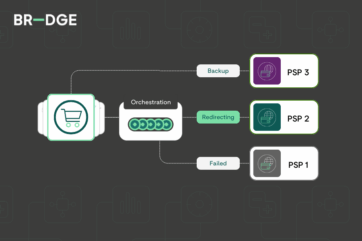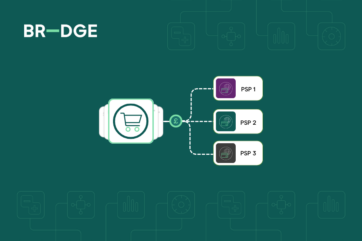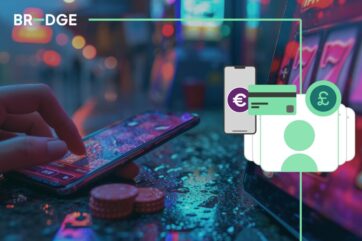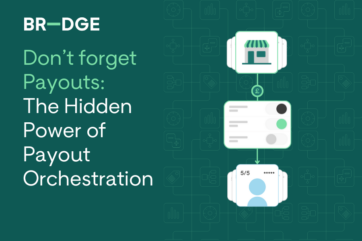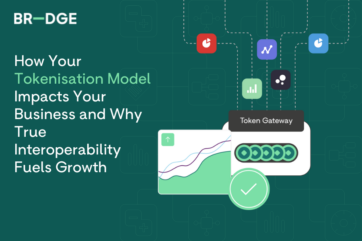
Payment technology: 8 trends to watch in 2023

The year 2022 had been a busy one, with a number of notable trends and innovations in the payment sector emerging and shaping the industry as we know it. New back-end technologies and advancements continue to make an impact and convert conventional transactions into more flexible and personalised payment experiences.
The evolution is encouraging both merchants and consumers to try new payment methods and utilise new technology for a more streamlined and convenient payment journey.
Based on a study by Merchant Advice Service, businesses lose approximately £1.8 billion a year by simply not accepting payment methods preferred by their customers.
It’s clear that the trends we observed last year reflect the ongoing digitalisation of the economy and the increasing focus on convenience, security, and efficiency in the payments industry while driving greater competition, innovation and new opportunities for consumers and merchants alike.
As we head into 2023, the payments industry is expected to continue evolving at a rapid pace. Among the most notable payment trends to watch for in the coming year include:
- The further adoption of alternative payment methods,
- Innovations in tackling e-commerce fraud,
- The growing use of digital currencies,
- The emergence of embedded finance,
- Increased focus on security and data privacy.
Do you want to stay at the forefront of the evolution of payments? Below are our top 8 payment trends, which we believe will drive industry growth and innovation in 2023.
1. Delivering a Tailored Checkout Experience
The checkout is an integral part of the conversion process. Our BR-DGE 2023 Consumer Survey found that 39% of consumers indicate checkout frustration as one of the leading reasons for abandoning their online shopping carts. The participants also noted that the perceived security of the checkout screen influences their decision to complete a purchase. These findings suggest that customers want to be able to trust their payment process and have a smooth, frictionless checkout experience.
The trend is also impacting modern shopping. It makes it a much more integrated experience, with a mix of both digital and in-store offerings appealing to a broader range of consumers. To meet the demand, merchants like you need to reduce friction and ensure a tailored, user-friendly checkout experience with consistent branding across all channels.
This includes simplifying the checkout process and providing personalised UI depending on the device, location and currency, while offering a variety of alternative payment methods. By doing so, you will provide your customers with the convenience of making a purchase whenever they want, wherever they are, using a payment method that suits them most.
Conclusively, the consumer demand for personalisation, convenience, and flexibility will continue to shape the market in 2023. This trend will drive merchants to offer their customers a tailored checkout experience, embracing new technology to meet these evolving needs.
Payment Orchestration is one such technology. According to our survey, 33% of consumers expect at least one payment method for each category when shopping online (e-wallet, open banking, debit card, BNPL).
Utilising BR-DGE Payment Orchestration technology brings a wealth of benefits. It allows you to integrate multiple payment methods into one seamless checkout process, so you can provide your customers with more flexibility and personalisation. With our powerful data suite, you're also able to gain a deeper understanding of their payment preferences and behaviour.
2. Providing an agile anti-fraud technology
The rapid growth of e-commerce in recent years has caused an increase in digital fraud. Fraudsters continue to take advantage of the anonymity and convenience of online transactions. Despite the enforcement of PSD2 and SCA in 2022 across Europe, there is still some way to go in terms of security and fraud prevention. Traditional authentication techniques are still being a weak link in the chain.
According to UK Finance, fraud losses on cards totalled £272.3 million in the first half of 2022, marking a 4% increase year-on-year. With the fast progression of the digital fraud tool market, using your traditional digital fraud detection systems will no longer be sufficient. Merchants will need a combination of methods and tools in order to keep up and improve the detection and prevention of digital fraud.
In 2023, many merchants will struggle to create an agile, resilient anti-fraud tech stack without adding more friction. More security checks will take away from the checkout experience. In fact, a Signifyd study found that 36% of consumers in the UK have had to abandon purchases because of challenges with SCA.
A need for enabling faster, more secure and frictionless payment processes across all channels will drive the wider adoption and growth of new technology, such as biometric authentication, AI machine learning and behavioural analytics.
As our BR-DGE 2023 Consumer Survey data reports, 34% of consumers consider security and encryption of payment details as the most crucial factors in creating an optimal payment experience.
Payment Orchestration platforms, like BR-DGE, will play an important role in helping merchants build effective anti-fraud tech stack. They will allow them to reduce checkout friction. as well as centralise and swiftly trial several fraud tools independently from payment service providers.
3. Optimising Payment Security with Network Tokenisation
Network tokenisation has gained significant traction in 2022 due to its ability to enhance security and convenience for customers. As technology continues to advance, the demand for improved customer experience and reduced fraud risks will drive the further adoption of Network Tokenisation by merchants in 2023.
Network Tokenisation replaces sensitive payment information with a unique token, which can only be used within a specific network or system. This token is then sent to the merchant for processing, rather than the sensitive data itself. Therefore, making it much more difficult for fraudsters to access and use it. While Centralised Tokenisation provides a single, secure location for sensitive payment data storage, Network Tokenisation offers real-time tokenisation, giving more flexibility, and a better customer experience.
Through network tokenisation, Visa has observed a 28% decrease in fraud rates, indicating the technology's ability to effectively curb payment fraud. Despite numerous benefits, network tokenisation is still at an early stage of adoption and usage. However, we anticipate that this will change quickly in 2023 as more merchants become educated in this area.
The technology not only supplies a safe and adaptable method of storing client information, but it also enhances recurring payments, by providing greater security and reducing checkout friction. As merchants are able to oversee the tokenisation process themselves, they have more control to optimise their payment process.
BR-DGE’s Network Tokenisation service, enabled directly via payment schemes, allows partners and merchants to lead the industry in transaction performance, ensure credentials are always kept up to date, and that consumers are offered the latest payment offerings in the most secure way.
4. Embracing AI to Revolutionise Payments
Artificial intelligence continues to evolve every year and digital payments will offer the ideal conditions for the technology to thrive in 2023. We anticipate that AI will continue to play a critical role in streamlining payment processes by automating repetitive and time-consuming tasks, reducing the need for manual intervention, and increasing the speed and efficiency of the payment process.
Among many use cases, AI tools are becoming widely used to monitor unusual behaviours, analyse large amounts of data and identify patterns or anomalies that may indicate fraud. This helps merchants predict and prevent disputes, also reducing the number of chargebacks.
The latest survey from NVIDIA shows that fraud detection in transactions and payments was the top AI use case investment in 2022, with 31% of respondents selecting it as their main AI priority, a 310% growth compared to 2021.
A compelling use case for AI in payments is using it to understand consumer behaviour and adapt the payment journey accordingly. By analysing your payment data, such as purchase history, location and time of purchase, AI can forecast peak times and perform load balancing between your acquirers to ensure that your payment process remains efficient and fast, even during times of high demand.
This strategy can be executed through intelligent routing. AI supports the intelligent routing of payments by providing the necessary data to make real-time decisions about the best and most cost-effective way to route a payment, based on a variety of factors. These factors can include the location, the current exchange rate, the fees associated with different payment networks, transaction volume and more.
BR-DGE’s payment orchestration offers intelligent routing as one of the key components. It gives merchants the ability to utilise the full range of options within the payments ecosystem, from optimising payment methods through to fraud capabilities, to create the most efficient payment process at the time of transaction.
By incorporating AI tools to enhance the efficiency, cost-effectiveness and security of their payment system, merchants in 2023 will have a distinct advantage over competitors who do not adopt this technology. Combining this with powerful payments insights, merchants will be well-equipped to make better data-driven decisions, improve their operations and drive growth.
5. The rise of Virtual Cards
Although virtual cards have existed for some time, their usage is expected to increase significantly in the coming years with new technology supporting merchants to meet the growing demand. In fact, Grand View Research predicts the global virtual cards market will hit $60.06 billion by 2030, growing at a CAGR of 20.7% from 2022 to 2030.
Virtual cards are a great, convenient alternative to physical cards as customers can access them from various devices. Their details are not shared with the merchant, which provides an added layer of security. Also, due to their capabilities like single-use function or custom expiration date, virtual cards also reduce the risk of fraud.
Virtual cards will also be crucial in reducing the environmental impact of conventional physical debit cards or loyalty cards, which are frequently discarded after a brief period of use, as the world progresses toward greater sustainability.
Technology like payment orchestration helps you to embrace virtual cards as a payment method or digital loyalty strategy, allowing you to simplify the process of providing rewards and incentives to your customers. Through a single integration point, merchants can access multiple payment methods, digital wallets, and integrated digital loyalty schemes.
The popularity of virtual cards among merchants and consumers alike is expected to rise significantly in 2023 due to the advantages they provide. Alongside the new technology advancements in the payments space, virtual cards are surely a key trend to watch.
6. Redefining Fintech with Embedded Finance
Embedded finance, although not a new concept, is expected to revolutionise digital payments in the coming years, particularly with the emergence of Open Banking and evolving customer demand. As reported by BainCapital, financial services integrated into e-commerce and other software platforms represented $2.6 trillion, or almost 5%, of all US financial transactions in 2021, and it is projected to surpass $7 trillion by 2026.
Embedded finance is a way to make financial services, like paying, borrowing, and saving money, more easily accessible to people by incorporating them into everyday products or services. For example, when shopping online, a customer can choose from financing options or instalment plans, and complete their purchase all within the platform, without the need to go to a separate website or application. Simply put, the aim of embedded finance is to make financial services more convenient and reachable for consumers.
As a need for more convenient and accessible financial services grows, merchants will increasingly look to embedded finance as a way to meet those demands. The technology offers a wealth of benefits that you can capitalise on to access new revenue streams and enter new markets. It simplifies the process for customers to access and manage their financial information, which in turn improves their overall experience and leads to increased engagement and loyalty.
By offering in-app or in-platform financial services such as in-app payments, in-app loans, and in-app insurance, merchants can access additional revenue opportunities from transaction fees, loan interest, and insurance premiums.
Additionally, offering financial services that are specific to certain customer segments can attract new customers who may not have had access to these services previously. For example, if your business sells home appliances, you can target customers who are in the market for home improvement services and may not have access to traditional credit.
Payment orchestration will be a crucial enabler of embedded finance, as it simplifies the management and acceptance of various payment types and allows for the integration of financial services through single API integration.
7. Transforming e-commerce with Social Commerce
The integration of e-commerce features into social media platforms, known as social commerce, has allowed businesses to connect with their audience in a more meaningful way. For example, using shoppable posts, buy buttons, personal reviews with photos and direct messaging capabilities. People are now able to purchase products or services directly from a brand's social media page, such as Instagram or Facebook, instead of visiting a website or physical store.
The combined power of social media and e-commerce is poised to continue to drive high consumer demand in these coming years. This is because it provides a more convenient, personalised and targeted way of shopping. According to Global Payments recent Survey, 52% of businesses plan to sell through social networks in 2023.
In essence, social commerce is a great extension of merchants' efforts in making digital payments more engaging. It removes friction and improves accessibility. Also, it enables you to reach a wider audience and provide a seamless buying experience. By combining the convenience of online shopping with the interactivity and engagement of that in-store, it also enhances your hybrid shopping strategy.
In order to effectively take advantage of social commerce in 2023, merchants will need to investigate new ways to improve their payment systems and ensure a smooth payment experience for their customers.
Payment orchestration can help with this using a single integration, enabling your customers to shop globally and pay locally using their preferred payment method.
8. The growing adoption of Digital Currencies
It's been a tough year for the cryptocurrencies, but despite their volatility, more merchants started to partner with blockchain firms and offer digital currencies as a payment method in 2022. According to Binance Global Crypto Index 2021 Survey, 78% of the general population expressed confidence in crypto, which shows clear signs of growing adoption.
Digital currencies differ from traditional forms of payment. They are not managed by a single authority such as a government or central bank. Instead, they are fully decentralised and use blockchain technology for their security and transparency,
They can also be transferred globally without intermediaries, greatly reducing the cost and time required to complete traditional cross-border transactions. In fact, the Juniper Research data suggests financial institutions can save up to $27 billion by using blockchain technology by 2030.
One of the key topics around the crypto space is making it a more friendly and secure space for everyone. Currently, there are no regulations protecting digital currency users, which causes events like the FTX exchange bankruptcy or the collapse of the Terra coin to happen.
Although there is still a long way to go, we anticipate that digital currencies will continue to grow in popularity and drive the evolution of payments in 2023 and beyond. By offering quicker, less expensive, and more secure transactions, they have the potential to completely transform the payments sector as additional options for both consumers and businesses
Payment orchestration will play a key role in driving the adoption of digital currencies. As an enabler, it can offer a secure and convenient platform for merchants and consumers to easily access and use digital currencies alongside traditional payment methods.
Summary
As we move forward into 2023, it's evident that the digitalisation of the economy will continue at a fast rate. The payments industry will prioritise convenience, security, and efficiency. As a result, leading to increased competition, innovation and new opportunities for both consumers and merchants.
Therefore, making payments a priority is essential if you want to take advantage of these promising payment trends. Merchants who are flexible, responsive, and customer-focused will stay ahead of the game and succeed in today's competitive market.
If you want to know more about how payment orchestration can help you stay competitive, innovate quickly and offer a smooth and comprehensive payment experience in 2023, reach out to one of our BD-RGE Builders.
Related content
